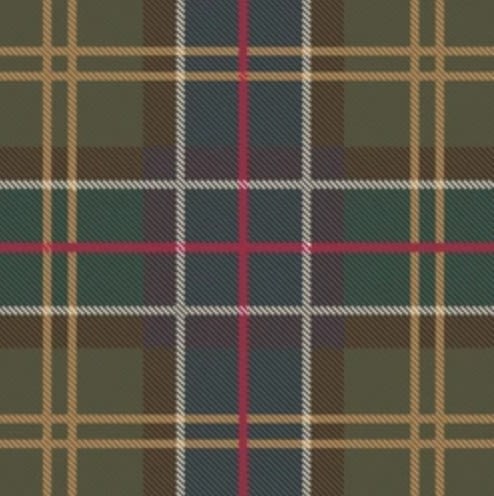Navigating the world of intellectual property licensing in fashion
Understand how fashion brands can use licensing

Licensing collaborations
As famous brands look to collaborate with other companies to create special editions, this poses a particular problem for ensuring that licensing agreements effectively protect the IP that belongs to brands and artists.
International interest in intellectual property (IP) and licensing is on the rise as many jurisdictions begin to face growing issues within their legal systems. These range from malicious industry actors producing convincing knock off products, trade mark trolls extracting fees through litigation to the interesting topics of debate caused by high-profile cases.
So what does this mean for license, grievance disputes, and the fashion houses have for their brands?
Many brands may collaborate to create exclusive merchandise. In these cases, both the retailer’s brand and the partner brand are provided for this one purpose through a legal IP agreement, a license.
These partnerships can sometimes take the form of a recognisable character for use in the partner’s merchandise. A popular example is the use of Disney characters that can be used by retailers, manufacturers and brands in their own products such as cards or toys or meal-deals.
In the congested world of fashion, Barbour’s Shaun the Sheep Christmas campaign turned heads with its clever advertising, store front designs in-store merchandising, mixing the characters of the well-known animated house-hold film favourite with the more established outdoor, country Barbour brand – reinforcing its values of quality, heritage and adventure.

Meanwhile, The Smiley Company, synonymous with the bright yellow smile logo, is partnering with Korean powerhouse Samsung on a collection of phone accessories as part of a joint campaign to spread positivity amongst users.
So, what makes these partnership deals work?
IP licensing oils the machine for companies to engage in these agreements and is a critical legal and economic framework that spans the entire globe.
The scale of IP is huge, with ‘Fashion Accessories’ making up for 10 per cent of the $138 billion total sales in the licensed ‘Entertainment and Characters’ sector. In 2022, global sales revenue generated by IP licensed merchandise and services exceeded $340 billion, according to the 2023 Global Licensing Survey.
The innovative practice of licensing
When a company licenses their brand, this allows a partner licensee to deploy a brand name, use a logo or other IP such as trade dress, patents or copyrights exclusively made available as a result of the licensing agreement.
Licensees can leverage the brand’s recognition and reputation to sell their own products or services, whilst respecting the IP rights of the licensor. The licensor is often involved at every stage of the development and marketing of their partner licensed products, ensuring the maintenance of its brand equity.
As a result, licensors are able to monetise their intellectual assets and protect the on-going creative investments they originally made to generate their licensing brand or idea.
However, while the physical part of the trade mark is often the part you see, this is not the total embodiment of the brand, and its trade mark.
The business model of a brand and its associated lifestyle, reputation, goodwill, fans, marketing, PR ability and brand values are an essential part of the work and creative vision of any company.
Brands can spend decades building the character, values and associations around their trade mark and invest time and financial resources to develop the relationships that their customers hold with it. In the case of The Smiley Company, its “Smiley” name and distinctive eye-catching logo is associated globally for its positivity and long-standing cultural importance in both fashion, design, art and visual communication.
The legal protection that licensing provides preserves the effort that has gone into this creative process and permits the owner to rightfully benefit from their investment in a sustained way for significant periods of time.
Importance of IP licensing in fashion partnerships
In the fashion industry, creative acts encompass various aspects of design, innovation and expression.
A great licensing partnership benefits all parties. The Smiley Company has used this effectively, collaborating with some of the most significant and largest companies in the world including LVMH, Richard Mille, Adidas and H&M.
Key to the success of these partnerships is the concept of ‘distinctiveness’ where what appears to be a simple image becomes synonymous with a global household brand. Think of an ‘apple’ or of a ‘tick’ – swiftly re-imagined into culturally significant logos belonging to Apple and Nike.
In these circumstances, distinctiveness is the defining aspect of what separates a brand design from other concepts. It is this distinctiveness that a brand’s underlying values create and what is utilized when it is licensed by another brand.
Drawing back to the Smiley example, it was Franklin Loufrani’s creative act of inventing a business model around licensing – not just creating a simple logo – that grew into the collaborative design brand it is today, thanks to the creative work of his team.
Whether or not someone used a logo or name earlier in a different form or industry with relatively little or no impact is meaningless. It is the ability possessed by global brands to extract a simple sign like an apple, a penguin, a polo player or a crocodile and turn them into something new, popular and distinctive that contributes to our culture and develops our economies.
These notions of licensing are integral to the efficient, fair and legal use of other brand trade marks when brands collaborate and is the reason why our IPs must be protected at all costs.

